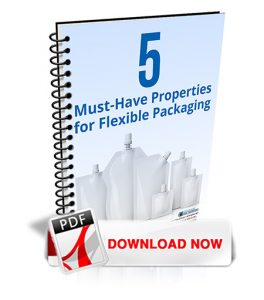 A successful packaging implementation is one that meets the needs of both the manufacturer and the final consumer. The ideal package requires an attractive design while protecting, conserving and delivering its contents satisfactorily. There are five key properties that must be taken into account to accomplish this task.
A successful packaging implementation is one that meets the needs of both the manufacturer and the final consumer. The ideal package requires an attractive design while protecting, conserving and delivering its contents satisfactorily. There are five key properties that must be taken into account to accomplish this task.
All posts by Rob DiMeo
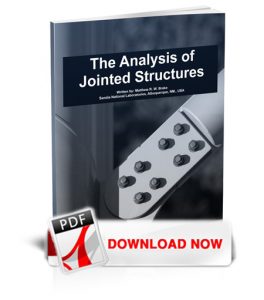 The primary function of a joint in an engineering structure is to connect, usually stiffly, two separate substructures. This function is well accomplished; however, in doing so a secondary function of a joint is introduced in which it augments the dynamics of an assembled system. Joints thus introduce two features to a structure: amplitude dependent stiffness and amplitude dependent damping. With the state of the art techniques, the amplitude dependent stiffness can be predicted reasonably well (to within 10%); however, the amplitude dependent damping is still beyond predictive capabilities.
The primary function of a joint in an engineering structure is to connect, usually stiffly, two separate substructures. This function is well accomplished; however, in doing so a secondary function of a joint is introduced in which it augments the dynamics of an assembled system. Joints thus introduce two features to a structure: amplitude dependent stiffness and amplitude dependent damping. With the state of the art techniques, the amplitude dependent stiffness can be predicted reasonably well (to within 10%); however, the amplitude dependent damping is still beyond predictive capabilities.
Written by: Matthew R. W. Brake – Sandia National Laboratories, Albuquerque, NM., USA
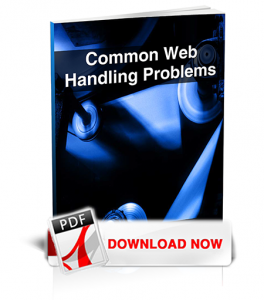 Fundamental Web Handling principles apply across all roller-transported manufacturing processes. Understanding the basics helps to improve productivity and reduce waste of products made from papers, films, foils, nonwovens, textiles, belts, or any thin, continuous material.
Fundamental Web Handling principles apply across all roller-transported manufacturing processes. Understanding the basics helps to improve productivity and reduce waste of products made from papers, films, foils, nonwovens, textiles, belts, or any thin, continuous material.
This eBook by well-known expert Tim Walker outlines many common issues with tension control, roller design, nipped processes, web position control, wrinkle prevention, and winding.
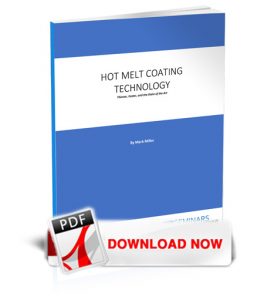 As coating corporations work towards increasing margins, getting more out of the capital at the site, improving turns in inventory, and reducing environmental impact, they are running into the edge of material, expertise, and equipment capability. Hot melt adhesive coating is a great option for traditional solvent based tape and label manufacturing, especially as the “green” label is providing a marketing edge in commerce. But what are the limitations? How thin can an adhesive be stretched before the rheology of the polymer is detrimental to the final product? How do you best operate the equipment to maximize product yield? This presentation will exhibit the current direction hot melt adhesive manufacturing companies are headed and what the impact is for raw material suppliers and equipment manufacturers.
As coating corporations work towards increasing margins, getting more out of the capital at the site, improving turns in inventory, and reducing environmental impact, they are running into the edge of material, expertise, and equipment capability. Hot melt adhesive coating is a great option for traditional solvent based tape and label manufacturing, especially as the “green” label is providing a marketing edge in commerce. But what are the limitations? How thin can an adhesive be stretched before the rheology of the polymer is detrimental to the final product? How do you best operate the equipment to maximize product yield? This presentation will exhibit the current direction hot melt adhesive manufacturing companies are headed and what the impact is for raw material suppliers and equipment manufacturers.
Written by: Mark Miller
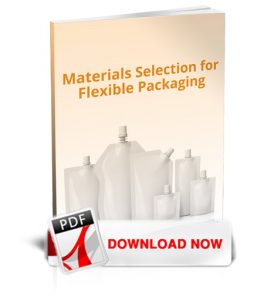 Multilayer flexible packaging is defined as a structure where there is a combination of two or more layers, polymerics or not, disposed in parallel one to another. This commonly presents a structure compounded by thin foils brought together that enables functional, protective and/or decorative properties. In most cases, a single polymer cannot meet all the requirements to achieve a given packaging performance. As a result, monolayer films have been replaced by multilayer films for production of flexible packaging structures.
Multilayer flexible packaging is defined as a structure where there is a combination of two or more layers, polymerics or not, disposed in parallel one to another. This commonly presents a structure compounded by thin foils brought together that enables functional, protective and/or decorative properties. In most cases, a single polymer cannot meet all the requirements to achieve a given packaging performance. As a result, monolayer films have been replaced by multilayer films for production of flexible packaging structures.
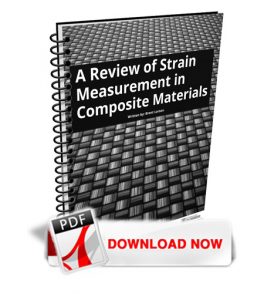 Composite materials meet many needs in a wide variety of applications. Their unique properties enable them to provide solutions where other materials cannot compete. The complexity of polymeric composite materials makes characterization of their mechanical properties challenging. There are many standard tests to help in interrogating composite materials. There are ASTM, ISO, and other standards to guide testing, and care must be taken to choose the right tests for your applications. This means paying careful attention to loadings and environmental conditions including temperature and humidity. Imparting the pertinent stresses to your composite materials may involve biaxial testing. This review of strain measurement methods with advantages and disadvantages of each includes strain gages and a variety of extensometers.
Composite materials meet many needs in a wide variety of applications. Their unique properties enable them to provide solutions where other materials cannot compete. The complexity of polymeric composite materials makes characterization of their mechanical properties challenging. There are many standard tests to help in interrogating composite materials. There are ASTM, ISO, and other standards to guide testing, and care must be taken to choose the right tests for your applications. This means paying careful attention to loadings and environmental conditions including temperature and humidity. Imparting the pertinent stresses to your composite materials may involve biaxial testing. This review of strain measurement methods with advantages and disadvantages of each includes strain gages and a variety of extensometers.
Written by: Brent Larson
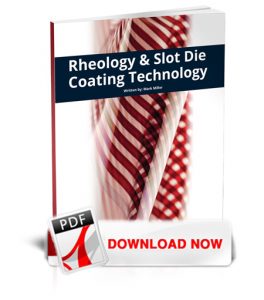 Slot die coating technology is a function of the coating process, auxiliary system and fundamental technique. The decision to utilize a coating technology needs to be analyzed against these functions to determine best fit. In the era of clean, thin and precise converting operations, a customized coating system is necessary to have a technical edge. Building the system from the material up to the process sets the stage for a high precision tool designed around the process needs.
Slot die coating technology is a function of the coating process, auxiliary system and fundamental technique. The decision to utilize a coating technology needs to be analyzed against these functions to determine best fit. In the era of clean, thin and precise converting operations, a customized coating system is necessary to have a technical edge. Building the system from the material up to the process sets the stage for a high precision tool designed around the process needs.
Written by: Mark Miller
Since 2003 Seminars for Engineers has been helping companies solve problems in the web handling and converting industries.
Our consultants possess diverse and wide-ranging technical backgrounds and extensive experience in all aspects of web-based conveyance, coating and drying. They ask the right questions, listen to answers and provide practical solutions in areas such as these:
- Heating and cooling of the web
- Coating and web finishing
- Machine clothing (felts, forming wires)
- Mechanics of winding and tension control
- Pressing and drying
- Roll formation
- Roller covers and alignment issues
- Wrinkling, spreading, guiding, doctoring, slitting and unwinding
Over the years we have built a solid reputation for accurately and effectively providing data and findings that have generated millions of dollars of both profit and cost savings for our clientele.
Identified nip drive problems that facilitated the correction of wrinkling and rewind registration issues resulting in savings of $100K per year at Saint Gobain.
Calculated drying rates for a mill making coated boxboard which was production limited due to drying constraints, thus proving that a minor capital expenditure could result in a 7% increase in production and resulted in $1MM added to bottom line.
Trained operators in a large newsprint mill with a program specifically tailored to the mill’s operations and resulted in a 2% operational improvement in in total machine efficiency.
Fixed issues with lateral registration on a vacuum plasma coating system (for coating aluminum foil) identified as occurring on a machine during shipment.
Lead a troubleshooting session on a suction pickup roll to resolve a very high sheet break issue – a mis-ground press roll was revealed to be the root cause and prevented a costly 24 hour pulp machine outage.
Performed advanced multivariate analysis at an integrated pulp and paper mill that was experiencing costly periodic multiple puffs / day episodes – the analysis led to a troubleshooting effort that identified a leaking oil cooler on a turbo generator.
Extended machine clothing life by 50% at a Champion cartonboard mill after implementing operational techniques that greatly increased machine efficiency.
Contact us today for an assessment of your consulting needs.
Our roster of technical consultants provide the problem-solving know-how that comes from decades of engineering experience. Offering a deeper level of expertise than may be available internally, these experts are an invaluable resource, bringing a fresh set of eyes to an existing problem or offering process improvement recommendations with immediate payback.
Fields of Specialization
- Composite Materials
- Fasteners & Bolted Joints
- Heat Treating & Plating
- Injection Mold Design
- Lamination
- Packaging & Sealing
- Web Coating & Drying
- Web Handling & Converting
- Winding & Slitting
Contact us today for an assessment of your consulting needs.
